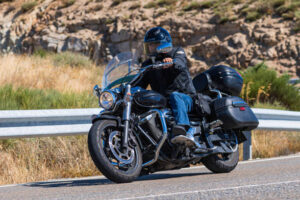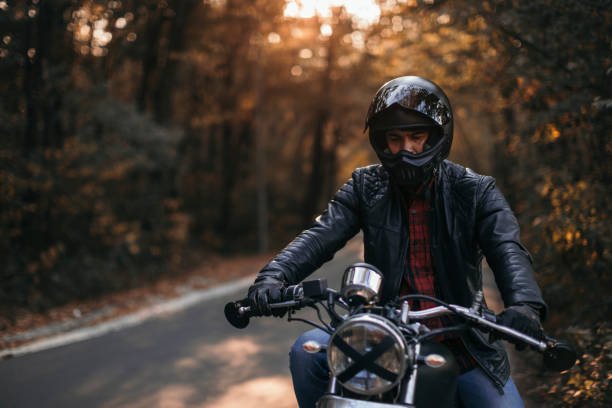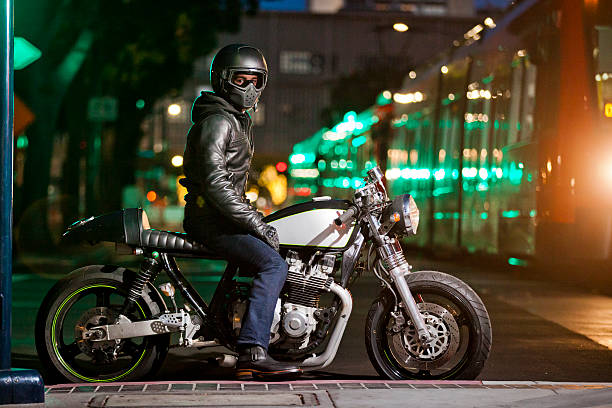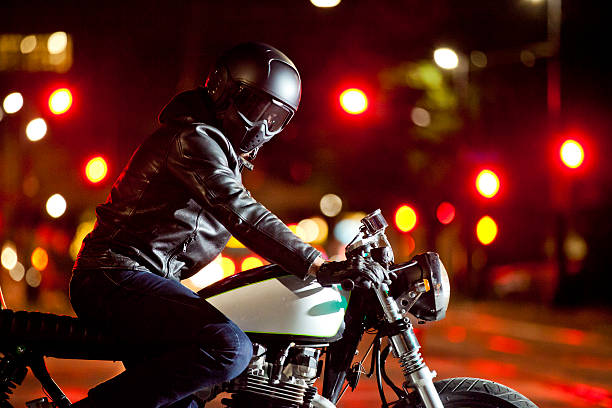The Value of Club-Style Biker Vests in Motorcycle Clubs
The club style biker vest is a powerful symbol of identification and solidarity in motorcycle clubs’ rich culture. These vests, usually leather and decorated with patches, logos, and club badges, carry a rich history in every thread.

After World War II, returning veterans sought out others who shared their restlessness and love of motorbikes, which led to the biker vest. Early motorcyclists wore military surplus leather coats to protect themselves from road hazards. The coats became the classic vests, suitable for warmer weather and ideal for personal expression.
As motorcycle clubs arose, the vest gained significance. It became a group-aligned uniform. Like knights’ armor, which has colors and crests to identify them, the biker vest shows the wearer’s club loyalty and position. Each vest patch is carefully selected and placed to chart the wearer’s club journey. A patch on the right breast may indicate the rider’s club chapter, while a patch on the left may indicate their rank.
These vests memorialize as well as identify. The club can honor fallen riders, notable events, and milestones with patches. These bind generations of riders by reminding them of the club’s heritage and sacrifices.
These vests also help these diverse groups look uniform. Each vest has a distinct tale and status, but the basic style open at the front, sleeveless, leather is consistent. Uniformity promotes equality among club members during meetings, rides, and events. It implies that each member has a personal history and shares a banner.
The club-style biker vest is comfortable and convenient. Since biking requires mobility, the sleeveless style is ideal. These vests are a long-term investment for riders because the leather protects the body and doesn’t wear out soon.
Additionally, vests are necessary on club rides. Club vests frequently have reflective patches to make the group more apparent to other drivers, especially in low light. Visibility can determine a safe ride or an accident; thus, this is essential.
These vests are deeply ingrained in motorcycle club customs. Prospective members endure arduous initiation ceremonies that differ by club before receiving their vest. The vesting ceremony marks club acceptance and is frequently emotional and traditional. It signifies loyalty to the club’s current, past, and future members.
Displaying a club’s vest in public bars, gatherings, on the road demonstrates territory and influence. It can be a mobile billboard for the club’s regional or national standing. As a club representative, the vest requires responsibility and behavior from the wearer.
Vest distribution can be a governance issue within. Club leaders utilize vests to reward or punish loyalty. Given the vest’s importance in club order and hierarchy, such selections are made solemnly.
A club-style biker vest may seem like just another piece of apparel, but it has several meanings. It is an identifying symbol, a badge of pride, a historical vehicle, and a governing tool. The vest is worn with pride and responsibility by its wearers. It represents the motorcycle club’s mentality, making it essential to this subculture.

Club Style Biker Vest Customization: A DIY Guide
The club-style biker vest is more than gear in motorcycle clubs it’s a canvas for creative expression. Biker vest customization requires creativity, personal or group identity, and technical skill. The technique lets riders express themselves while keeping to club values. Each step picking materials, applying patches, or adding embellishments imprints personal history and style on leather.
This personalization begins with choosing the proper vest. Riders prefer the toughness and classic style of leather vests, although denim vests are lighter and easier to manufacture. The difference between a vest with or without pockets may appear minor, but it can affect your patch and accessory planning. Patches with elaborate artwork or enormous club emblems can be displayed seamlessly on a pocket-less vest.
After selecting the vest, the first big customization decision is patched. Patches can reflect personal convictions, memorial memorials, and motorcycle ties. The larger patches, like the club’s logo, are placed on the back of the vest for strategic placement top and bottom rockers curved patches with the club name and location border this.
Joining a motorcycle club requires knowing and following patch placement and size rules, which are generally rooted in club hierarchy and history. Independent riders can customize their patchwork to reflect their adventures and achievements.
Customizers can add patches, studs, spikes, and LED lights for style and purpose. Add studs and spikes to the vest or lapels for a more aggressive, armored look. LED lights, which can be weaved into seams, add safety and style in the dark. Careful planning and technical skills are needed to properly install and waterproof electronic upgrades.
Custom embroidery may make a vest more customized. Embroidering a nickname or essential date on leather needs precision, a heavy-duty sewing machine, and a skillful hand. Hand-stitching with thick, strong thread is a more time-consuming option for handcrafted enthusiasts.
Painting on leather is another way to personalize vests. Large, colorful backpieces or small, detailed decorations made with leather-specific paints can make a vest stand out. To avoid flaking and wear, the leather must be cleaned and roughened before painting and sealing.
Some motorcyclists add interchangeable parts to their vests for versatility. This may involve attaching Velcro or snap patches to change them with the mood. Riders compete in multiple events and want their vest to show their personality or club affiliations without committing to a single design like this flexibility.

In the end, biker vest customization generally involves personal accessories. These may feature personalized zippers, buttons, or linings that lend color or pattern to the vest when open. These features enhance the vest’s appearance and feel.
The customization process should balance aesthetics and utility. Personalized vests should be helpful and expressive on the road. Heavy patches and other embellishments should allow the vest’s comfort and rider’s movement. Regular maintenance keeps the leather supple and the components intact, so the vest looks excellent and lasts many rides.
In conclusion, creating a club-style biker vest is fun, creative, and personal. The concept beautifies gear and strengthens riders’ connections to their vest and what it represents about their life on and off the bike. Each vest is personalized with patches, paint, or personal touches to reflect the rider’s journey and identity.





Leave a Reply